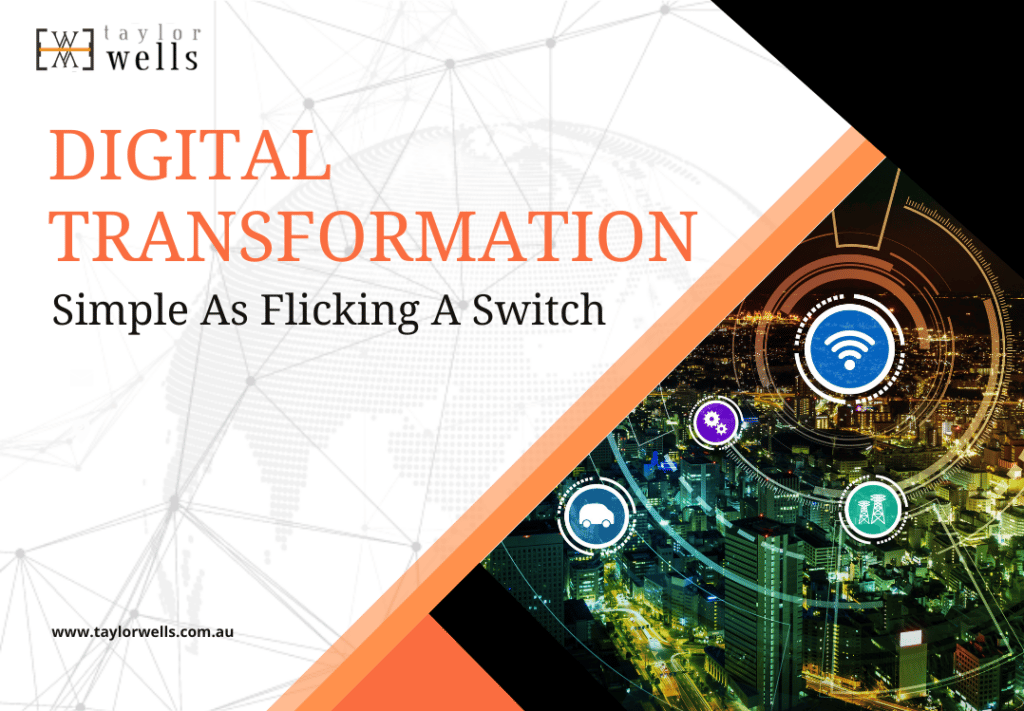
Does AI Offer Businesses The Best Price Optimisation Techniques Or Not? 🛎️
Can AI pricing really improve a business’ price optimisation techniques and analytics?
From phones to cars to insurance pricing and many other B2B industries, AI is fast becoming a pricing tool of choice for businesses that want to improve pricing and drive immediate profitability. We ask: How useful is AI at improving strategic price setting, particularly in the area of price optimisation?
>Download Now: Free PDF Digital Transformation
We ask this because price optimisation using AI can drive massive profitability. Artificial intelligence (AI) can optimise prices at any given time to meet the expectations of different customer groups. In fact, more businesses are turning to price optimisation techniques based on positive feedback from customers.
For example, as many as 60% of shoppers choose to buy at stores with optimal prices, not the lowest prices. Interestingly, the latest research from IBMs indicates that as much as 73% of businesses (retailers) are using intelligent automation to improve their pricing and promotion by 2021.
So, with this in mind, we’re going to explore what AI pricing is, price optimisation techniques, what it can do to drive better prices to improve revenue and profitability. We believe that AI pricing will become a permanent fixture in the business landscape. In fact, we predict that more business leaders will consider AI pricing as a key to improve pricing. That includes new pricing models and capabilities more than ever before.
By the end of this article, you’ll learn how AI pricing works:
What are the benefits of using AI in price optimisation?
Secondly, what are the different price optimisation techniques for AI pricing?
What are the keys to employing it in your business?
Table of Contents:
I. Price Optimisation Techniques
II. Price Modelling Techniques

Price Optimisation Techniques
What do you gain from price optimisation?
Several studies show that expending money on people, systems, and processes to optimise prices can generate between .5% to as much as 4% return on sales. By employing AI, a business makes faster and better-quality decisions using the large diverse sets of information around products, customers, buyer journeys, and behaviours. These benefits are obtainable using AI technology established across many industries and companies. In fact, using AI warrants a higher ROI than other solutions without AI.
Businesses, especially retailers gain price predictions and optimisations based on various market changes that go in line with their volume goals and pricing. In effect, pricing is no longer a problem. In a way, companies can use this guide for their business life cycle decisions. Furthermore, they regain back valuable time, attending to other important aspects of their business.
Automated AI pricing solutions are the future of companies and industries. They lessen the amount of time needed for manual labour when tracking or monitoring competitors’ prices.
The benefits of technology don’t stop there. Nowadays, businesses also get to focus their operations around customers and provide a more personalised experience according to their browsing history, wish lists, including cross-sell and up-sell recommendations. They get assortment optimisation, diverse adjustments based on the occasion, consumer behaviour, category, product, season, and rival’s intelligence.
In other words, they get immediate market intelligence – a detailed understanding of human behaviour matched with extensive automation and data integration.
Typically, businesses that employ AI-led price optimisation pass through various stages.
They gain knowledge on how to set optimal prices by stock-keeping unit (SKU), by product group, channel, point of sale, and then by customer. Eventually, optimal pricing at each level will improve the profitability of the business especially if they use price optimisation techniques.
How does AI work?
Huge amounts of data are scanned by self-learning algorithms. It digs through never-ending pricing scenarios and proposes the most relevant price necessarily. Algorithm-powered models take into account thousands of hidden correlations between the items in the portfolio to suggest single prices that maximise profit and sales of the whole product group. Like for instance, it considers the way the price shifts for one product can impact the sales of other items of the retailer.
AI can automate all the painstaking tasks of pricing and allow your staff to move to important customer-centric decision making. It is no joke to set optimal prices for at least a thousand products on a daily or weekly basis. Your managers need to be skilled in analytical and mathematical abilities to make fast decisions. Thus, you need to be equipped with AI.
At the centre of AI is machine learning (ML). ML is a method that has the capacity to learn on its own without programming it. Machine learning uses the information to recognise patterns in data and modify actions appropriately. So that, when there’s new data, it creates programs that adapt to that particular information.
ML algorithms are similar to mathematical optimisation and computational statistics. It is a standard process used to make elaborate algorithms with predictive patterns. Others know this as predictive analytics, a number of analytical models that reveal insights from trends and archival information in the data set.
Machine learning is composed of several processes and various types of learning. It’s even in your Facebook’s news feed and can even foresee your next plan when you want to buy soup, for instance.
In essence, AI is a pricing analytics software with machine learning parts that use a technique built on a particular statistical model (multi-task learning, Gaussian process regression, Bayesian linear regression, and a number of other models.) It develops algorithms that recognise patterns automatically from the data and predict prices according to that information.
It’s a pricing mechanism that aids you in monitoring competitor prices instantaneously. It also sorts out and compares identical products which depend on extensive elements selected, then optimises prices.
Different AI price optimisation techniques
Transparency of decisions and controls over the algorithms are key elements to implementing successful AI pricing. In the same manner that change management is key to obtain the buy-in from the company on how to leverage AI pricing most efficiently.
Let’s discuss the four price optimisation techniques that companies commonly use:
-
Regression Analysis
This is the conventional approach to identified trends and interconnection between data and to generate predictive models. Many Machine Learning approaches are actually regression models such as Regression Trees, NN etc. The aim of these models is to forecast value from a set of other variables, may it be numerical or not. It is practical to predict different values like volume variation or competitors’ prices in reaction to your own price adjustment from a price optimisation viewpoint. This helps to position your prices at the most productive point.
Machine Learning, however, has its downside since it needs quantitative and qualitative data to provide valid predictions. Oftentimes, it’s difficult specifically in a B2B pricing context, due to insufficient data on specific segments. However, at a global level, it can be relevant to provide insights for key customer segments or top-performing product categories.
-
Elasticity Approach
The goal of price optimisation is the capacity to model price elasticity. With this approach, providing optimal prices recommendations becomes apparent for each product and customers segments either to maximise revenue or profitability. This approach depends on regression models it also has the same limitations and is a bit hard to obtain especially for B2Bs because of business relationships complexity.
-
Machine Learning
Machine Learning is a powerful method to automate product and customer segmentation. It enables a business to define and maintain similar segments about the behaviour of customers according to transactions and master data. This segmentation can define optimal price corridors such as floor, targets and stretch which makes it easy to explain and share in the sales organization. ML models can also give products recommendations to help improve up/cross-selling profits.
-
Adaptive Multi-Agents System (AMAS)
An advanced approach that imitates the way companies works, coming from an academic research field named Distributed Artificial Intelligence. It is a bio-inspired model committed to solving intricate optimisation problems. It relies on the main principle of the emergence properties of self-organising systems. Like for instance, birds flocking, ants’ colonies, etc. That is to say, the whole organization provides resolutions to problems that are not easy than what a single of its component can.
AMAS focuses on the “how” in price optimisation, like determining the best sales conditions to reach the objectives. However, the other approaches focus on the “what” such as knowing which price or margin to offer for this segment. Addressing the “how” in price optimisation is oftentimes neglected and more difficult to perform a final price recommendation in an organization with thousands of list prices, lots of special discounts and also complex business rules to respect. With standard pricing software, it’s impossible to find the optimal configuration but it is where AMAS excels.
Frequently, AI systems are regarded as black boxes (AMAS as a white box) that only supplies recommendations but doesn’t help final users in understanding why. With AMAS, recommendations can easily be interpreted by business users because it’s a model of how the pricing works within a specific organization. Furthermore, AMAS provides information about the optimisation process itself that allows the user to understand why an objective is met or not. And if not, it provides reasons that prevented it from doing so.
There are various AI and Machine Learning methods and price optimisation techniques for segmentation and price optimisation. Your choice depends on the situation such as data available, industry and routes to market.
Keys to success to price optimisation using AI Pricing
We cannot avoid human errors. Having said that, a business could lose millions of dollars in revenue and profit opportunity, since determining major drivers could take no less than weeks. However, AI-powered price optimisation systems focus to resolve this with unprecedented speed and accuracy. But why are retailers still hesitant in adopting such systems?
There are 5 important steps to be taken for AI-driven price optimisation to be effective:
Complete, high-quality, and well-structured data
Basically, data must be complete, high-grade, systematic and cover at least three years to be eligible for the algorithmic model. If it is not possible to restore lost data or bring it back to the same quality, a business may opt to wait for no less than a year. Then gather data in a single format, or to buy or model it.
Invest to build or buy
A successful business means being able to combine core competencies with other competencies. For retailers, negotiating purchase prices with dealers and then setting optimal prices (which needs a completely different set of skills).
In some cases, like Amazon, they invested in creating an in-house pricing hub. While others, like Target or Metro, they launched startup labs to test and integrate solutions. Businesses with budget constraints collaborate with independent startups working in a specific field, having some grip in the market.
Identify products for AI pricing
Not all products require price recommendations fueled by algorithms. Normally, exclusive items which make you different from your competitors are the ones that need algorithmic recommendations. For example, expensive private label products.
Apply AI suggestions to products that you share with your rivals but only those that don’t need the lowest price to attract buyers. For instance, pet food and supplies. Customers would choose to shop in a store that specialises in pet food and supplies rather than a supermarket offering lower prices for the same products. In addition to a nice price offer, typically shoppers also look for advice. In this case, AI can suggest prices which enable you to entice customers, at the same time maximising your revenue.
Let Pricing Team handle the whole pricing process
Needless to say, pricing managers should know how to interpret and trust AI’s price recommendations before using the system. Pricing team members should take control of the whole pricing process. Before actually employing it and to make sure it’s working well, put restrictions on algorithms or test price suggestions.
Keep System updated
The system should be regularly updated about your business goals and pricing strategy. So as to come up with the most relevant scenarios. Constantly monitor the system on how it works and make corrections necessarily. To stay productive, the system needs to integrate all the required technological advancements.
Envision a world where all your products maximise your revenue. Your pricing managers can work out more favourable purchase prices and come up with more efficient pricing strategies. And your customers keep coming back to buy from you, choosing you over your competitors. Your business achieves continued growth. That world will happen in real life with AI.
Implications
There are not enough people who know how to operate AIs which think and learn pricing by themselves. Therefore, a remedy would be offering pricing platforms and tools that permit AI-driven work “as a service”, rather than starting everything from scratch; organisations are able to take ready-made pricing strategy and plug in their own data.
Like any programs, AIs need relevant data just to make sure that their solutions do not cause other pricing issues. Specifically, all those areas beyond those which they designed to consider.
People are doubtful about this technology on how it takes pricing decisions. Whether all its decisions are perfect or not, the remedy can lie in making AI explainable, provable and transparent. Organisations should implement explainable AI.
〉〉〉 Get Your FREE Pricing Audit 〉〉〉
Conclusions
Most of the AI applications are based on massive volumes of data to learn and make intelligent decisions. Hence, machine learning systems depend on the data which is often sensitive and personal in nature.
Organisations are investing heavily in design methodologies. Focusing on how to create AI models to learn despite the scarcity of labelled data. Labelled data is organised to make it understandable for machines to learn.
There are risks and challenges that are associated with AI implementation in business. However, just like the two different faces of a coin, AI also has several opportunities for businesses, due to the opportunities associated with AI. Thus, many businesses hire IT specialists, to train AIs to optimise their pricing strategy.
Price Modelling Techniques to Weather a Crisis
Is a centre of excellence in setting innovative price modelling techniques essential for the industry to survive a crisis and increase profits?
The coronavirus pandemic has changed the rulebook on pricing. Hence, all industries sectors have been impacted, from the tech companies to service industries. This pandemic has created a commercial situation that no company CEO or executive team has prior knowledge or preparation time to face. Lately, all industries have been clamouring to create a better business model to keep up with the changes that the new normal has brought about.
As the managing director of my own business, I know it’s tempting to take defensive cost-cutting measures in-office approach to protect against uncertainty. In times like these, there’s a lot of pressure to reduce costs in businesses right now. However, hasty decisions could jeopardise long-term objectives for growth.
To find the answers to survive this crisis, every leader is going to have to adopt a centre of excellence model in an organisational structure with a strategic approach to pricing and cost management. Thus, equipping teams will not only sustain through the unknown but also create and capture growth opportunities in the future.
In this article, we focus on the steps that you should take to create a cohesive and adaptable centre of excellence for price modelling techniques. You will learn how to unite in a common purpose gathering information to devise pricing solutions. How can you refine outcome-based pricing and create innovative pricing strategies to increase profits, all these at an accelerated pace?
Creating a price centre of excellence and modelling techniques
Waiting for stakeholders to create, implement or improve pricing when they aren’t fully equipped is the worst thing you can do right now. So, you need to move things quickly – get the right people on the project and the wrong ones off. Otherwise, you will miss an opportunity to get the company out of serious financial problems and commercial situations.
So, how do you do this? How do you accomplish the seemingly impossible? The answer is to create a pricing centre of excellence model that empowers the pricing team and key stakeholders to operate outside of the current hierarchy and structures of the company. It is meant to create and capture value for the business and your customers.
A Centre of Excellence in pricing is a team that offers best practices, leadership, assistance, and research within the pricing department. It impacts sales, revenue, and marketing trends as they offer expertise in products and services.
Other companies are moving in this direction. They are reshaping pricing departments from old team structures and developing new and better workflows. In addition, they are building a price operations team to improve and run the company’s critical daily pricing decisions. That includes setting up a strategic, crisis-response pricing team to deal with new problems and uncertainty head-on.
In every crisis, companies that prepare their pricing immediately will outlast and outperform companies that only focus on product innovation or cost management. Thus, well-planned price modelling techniques outside the influence of the company can create innovative pricing plans that can help you both protect margins and capture new revenue opportunities.
Four steps of creating a Pricing Centre of Excellence
1. Assemble a centre of excellence model
Pricing leaders should be working with product managers along with the marketing and sales teams. From price testing methods, they can build pricing tools from a collection of data, and monitor how these affect revenue and sales. So, assembling a task force that confronts the problems and priorities at hand is the first step. Everything from the delegation and tasks will naturally follow through.
In the context of Covid-19, businesses must prioritise marketing opportunities to earn customer engagement. So, it is important to launch two groups. One should be an intelligence team that functions as front liners on the ground while obtaining feedback from the surrounding members where pricing situations, sales, marketing, and business models are taking place.
The second group functions as a planning unit. Their role is to produce scenarios for recovery during and beyond the crisis. Each team that is created should be small enough and consist of a mix of cross-functioning individuals with sales/marketing and pricing skills. They must work through a set of goals and parameters.
This strategy helps you identify the need to add more teams later on, or when you should disband another team when it has already accomplished its purpose and goal.
In every crisis, leaders should be asking:
- As a company, where are we right now?
- Where do we want to go?
- How do we get to our goal?
- What should we do to get there?
Pick a capable pricing leader to implement price modelling techniques
Right after assembling the two groups, pick the teams’ pricing leaders. Oftentimes, they aren’t just put in charge of key initiatives but are the central force who help make decisions quickly. So, you must carefully select problem solvers with critical thinking skills with a previous track record that proves their experiences and skills. They should be flexible to a range of different perspectives. That can come from marketing and product development teams who are resilient to support a pricing leader.
Best of all, select those who speak up on what needs to be done to make tough and even unpopular decisions. This improves both the speed and quality of decision-making.
2. Stay connected without completely losing communication.
With the teams now properly assembled, an all-access communication platform should be launched. This is not supposed to occur only across the teams within the centre of excellence.
For example, the marketing team collects information about customer behaviour. Then, a product development team can capture these opportunities to generate traffic. And the finance team can allocate the budget necessary for the pricing team to apply correct pricing principles.
In setting price modelling techniques, pricing leaders must create engagement across teams, pinpoint pricing opportunities, and provide resources to carry out the same efforts. Striking a balance of empowering and supporting teams without interfering is key. In the price optimisation process, teams that are no longer working will have to be removed as the situation demands, and form new teams that invest in other pricing and profit growth objectives.
3. Support an environment of transparency and authenticity.
As a pricing manager whose role is similar to a coach, being a catalyst for change should boldly create an environment of a psychologically safe space for the entire team. Understandably, some team members may have strong opinions or even better suggestions for certain pricing implementations, research, and strategies. Most of the time, conflict is inevitable in the journey of pricing optimisation in any company. And this is where an emphasis on collaboration and transparency should be enforced.
Rather than dismiss or punish creative ideas during brainstorming sessions, pricing leaders must acknowledge members who take calculated risks. It’s important to recognise who shares relevant information in the process as you don’t want to waste time trying out every tactic that pops into everyone’s minds. Of course, testing out ideas may result in mistakes too. So, it’s best to communicate in a manner that is honest and straight to the point.
Prepare for possible challenges that the company will face in the future. That includes priorities when it comes to promotional plans, re-pricing old and new products, and thinking outside the box when it comes to operations.

4. Practice self-organisation.
After having established a pricing unit, there should be a predictable cycle and routine that the team has set. As it gains executive support from marketing and sales leaders, the centre of excellence on price modelling techniques gradually becomes a self-managing and self-sustaining unit. It builds its own momentum to mobilise other teams they work with closely. As more issues are solved, some teams will have to be pulled out too.
So, even when the pricing team succeeds, it remains crucial to continue a working environment where members can share information, test out, and research pricing policies to learn from their mistakes.
It may be a challenge for pricing managers to plan and execute without a specific rule book. That’s why a centre of excellence must build rapport between sales/marketing and product managers. This is especially true when drafting a better business model.
As a leader in setting price modelling techniques, you must set the tone, connect the teams, and lay out the action plans. Don’t forget to accentuate your experiences and success stories while bringing the team towards a common purpose of responding quickly to any crisis or the changing trends of consumer behaviour.
Here are some innovative pricing strategies to increase profits:
1. Set premium prices for services that invest in innovation in technology and product development. Tesla is an example, setting itself for low-cost pricing in the electric vehicle market. In fact, Tesla also matches their prices in the non-electric vehicle industry.
So, ask yourself which services you can justify for charging a higher price. It could be from delivery and shipping costs or additional sanitising measures, as seen in the restaurant industry. In fact, as long as your products/services offer value, customers are willing to pay more. Here are other ways to raise prices without losing volume.
2. Base your pricing on your customer’s psychological biases. It also helps to rely on customer feedback and use “good, better, best” positioning to your advantage. Similarly, sale prices and discounts may be implemented to meet volume targets.
3. Use freemiums on your products/services for free, but charge for its premium version with extra features. Another way to do this is through value-added services where you charge for added features that customers choose.
On the other hand, there’s flat pricing which we often see in subscription services like software, newsletters, and even in buffets. The fees are charged in the same amount regardless of volume consumption. Then there’s “all day pass” in tourist attractions and live streaming services, or unlimited data/coverage plans from phone providers for a specific period of time.
4. Penetrate into the market with the highest initial price (aka price skimming) and lower it over time. Also, take a look at Everlane’s “choose your own price” for their “radical transparency” goal as a brand. It lets customers choose from almost 200 items that are 10% to 50% slashed off from their original price. These are for Everlane’s overstocks and least selling items.
Discussion on price modelling techniques and creating a better business model
With every crisis, companies that prepare for any emergencies will outlast the companies that did not. An important part of that plan is the establishment of a centre of excellence model for pricing, independent of the business structure.
It will continue to function without any interruptions as the pricing leader continues to be a coach and catalyst – one who inspires stakeholders and pricing teams to strive for more innovative pricing strategies and problem-solving capabilities.
Modifying previous price modelling techniques during any crisis must be coupled with redesigning a better business model. Is it applicable for your business to add a subscription or rental service? Check out how these businesses in the restaurant industry adjusted their business models to the new normal.
Researching trends and competitors will guide your pricing methods and business models. You don’t have to copy everything that competitors do. But testing out and experimenting with consumer behaviour is the best template that businesses must follow. Are you aiming to disrupt the market or a competitor? Are customers willing to tolerate a slight price increase? Will the changes affect demand and cause customer churn?
〉〉〉 Get Your FREE Pricing Audit 〉〉〉
Bottomline
In summary, companies always have a rule book to deal with natural and man-made disasters. But the coronavirus pandemic has radically changed the game. In fact, it reworked the guidelines of pricing strategies that were in place pre-Covid19.
So, creating a centre of excellence model without any guidelines will be daunting. However, this network of pricing teams will bring a common purpose for a more resilient response to any type of crisis.
A centre of excellence model outside the influence of the company can create innovative pricing plans. This means older structures and traditional pricing models may no longer be useful.
These uncertain times can also encourage leaders to think about what kind of organisation, culture, and operating model they want to put in place. This is to avoid returning to the old patterns of behaviour and embrace the next normal. Cross-functioning teams will be commonplace when sharing information and making joint decisions.
For a comprehensive view on maximising growth in your company,
Download a complimentary whitepaper on How To Drive Pricing Strategy To Maximise EBIT Growth.
Are you a business in need of help to align your pricing strategy, people, and operations to deliver an immediate impact on profit?
If so, please call (+61) 2 9000 1115.
You can also email us at team@taylorwells.com.au if you have any further questions.
Make your pricing world class!
Related Posts
Leave a Reply Cancel reply
Categories
- marketing strategy (26)
- Organisational Design (14)
- Podcast (114)
- Pricing Capability (87)
- Pricing Career Advice (10)
- Pricing Recruitment (19)
- Pricing Strategy (287)
- Pricing Team Skills (13)
- Pricing Teams & Culture (24)
- Pricing Transformation (47)
- Revenue Model (25)
- Sales Effectiveness (27)
- Talent Management (7)
- Technical Pricing Skills (35)







